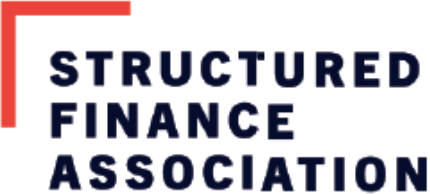SFA Co-Signs Joint Trades Letter to EU Policymakers
article by Structured Finance Association
Background:
On December 9, 2022, SFA joined 12 other global trade associations in a letter, led by AFME, to the Joint Committee of the European Supervisory Authorities and EU Commission. The letter highlights the need for and requests a pragmatic supervisory approach to the disclosure and reporting requirements under the EU Securitization Regulation for third country securitizations during the current interim period. This period captures the time between the release of the European Commission’s report on the functioning of the EU securitization regulation and the eventual finalization of the associated ESMA disclosure templates that will be used for Article 5 reporting.
Key Points:
- The Commission’s interpretation of mandated EU investor due diligence and transparency requirements when purchasing non-EU securitizations in their recent report excludes EU institutional investors from investing in these deals.
- The Commission stated that “it is not appropriate to interpret Article 5(1)(e) in a way that would leave it to the discretion of the institutional investor to decide whether or not they have received materially comparable information,” and
- They acknowledged that their interpretation de facto excludes EU institutional investors from investing in non-EU securitizations.
- As part of this interpretation, the Commission instructed ESMA to 1) review the existing disclosure templates for underlying exposures that all public securitizations use to better account for the usefulness of the information for investors and regulators and 2) draw up a new, simplified, dedicated template that all private securitizations would use (whether EU or third country).
- The joint letter highlighted the significant concerns regarding the harmful effects of the Commission’s interpretation of Article 5(1)(e) in relation to third-country securitizations, explaining the:
- Significant reduction in the universe of securitized products that EU institutional investors may invest in, and
- Loss of liquidity for the non-EU borrowers who rely on EU lenders and other institutional investors to raise capital.
- Emphasized the need for transitional measures because of the Commission’s interpretation, following years of industry requests for clarification and ambuigity, that results in a set of market systems and practices that will need to be adjusted while ESMA works through their own process of reviewing/creating disclosure templates for use by the market.
- Requests a “pragmatic supervisory approach” until the relevant ESMA securitization disclosure templates are fully reviewed and finalized.
- The letter intentionally draws from the exact language previously used by AFME to achieve a transitional solution for 2018-2020 interim period that also involved securitization disclosure templates, and
- Specifically asks for enforcement guidance by the Joint Committee of the ESAs addressed to national competent authorities, setting the expectation that “NCAs would apply their supervisory powers in their day-to-day supervision and enforcement of Article 5(1)(e) in a proportionate and risk-based manner.”
- The idea behind this approach is that NCAs would be allowed to consider the type and extent of reliable information already available to EU institutional investors, regardless of format or source, when verifying their compliance with Article 5(1)(e).
- The joint letter was co-signed by AFME, EFAMA, IACPM, Insurance Europe, AIMA/ACC, MFA, ICMA, ISDA, TSI, ASF, SIFMA and SFA, representing key participants in the European, American and Australian securitization markets.

